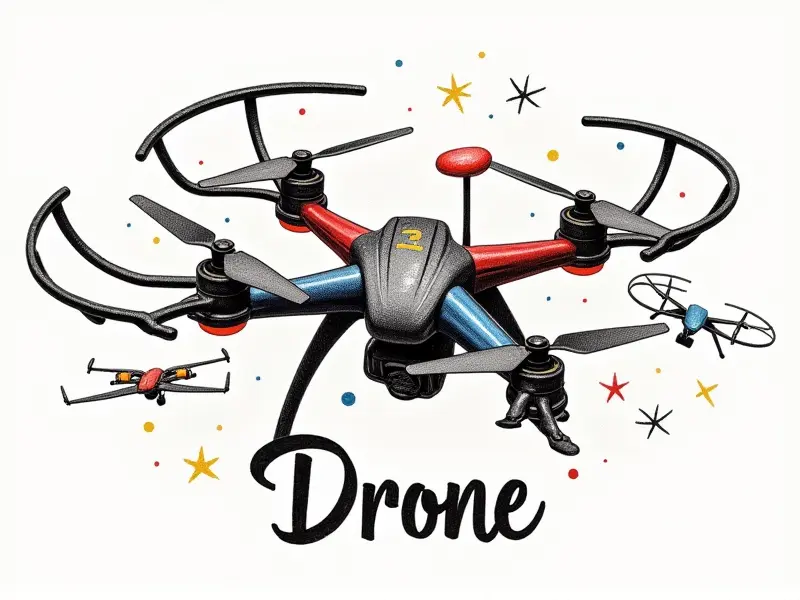How to fly a drone with GPS

Master Drone Flying with GPS Today
Flying a drone can be an exhilarating experience, but mastering the art of navigation with GPS can take your flying skills to new heights. Whether you're a beginner or an experienced pilot, learning how to fly a drone using GPS will enhance your aerial photography and videography capabilities significantly.
Navigate Like a Pro with Drone GPS
GPS technology in drones offers unparalleled precision and stability during flight. By leveraging the Global Positioning System, you can achieve accurate positioning, maintain steady altitude, and even execute complex maneuvers effortlessly. Understanding how to harness these features will make your drone flights smoother and more enjoyable.
Top Tips for GPS Drone Navigation
- Check Battery Levels: Ensure that both the drone’s battery and controller are fully charged before takeoff.
- Calibrate Compass: Calibrating your drone's compass ensures accurate orientation and reduces drift during flight.
- Enable Return to Home (RTH): This feature automatically returns the drone to its starting point if signal is lost or battery runs low.
- Use Waypoints: Pre-programmed waypoints allow you to automate your drone's flight path for repetitive tasks.
- Monitor Signal Strength: A strong GPS signal ensures reliable performance and prevents unexpected interruptions during flights.
Simplified GPS Drone Flying Tutorial
Flying a drone with GPS involves several key steps. Here’s a simplified guide to help you get started:
- Pre-flight Setup: Charge your battery, calibrate the compass, and set up RTH parameters.
- Lift Off: Initiate takeoff from a clear area. Ensure there are no obstacles nearby that could interfere with flight stability.
- Navigate: Use GPS to maintain steady altitude and track your intended path accurately.
- Execute Maneuvers: Utilize GPS waypoints for precise positioning during complex maneuvers like circling or orbiting objects.
- Landing: Gradually descend the drone back to its takeoff point using RTH mode if needed.
Beginner's Guide to GPS Drones
If you're new to flying drones with GPS, it’s essential to familiarize yourself with basic concepts and functionalities. Start by understanding the importance of GPS in maintaining stability and accuracy during flight. Practice simple maneuvers like hovering and moving laterally before attempting more advanced techniques.
Quick Start: GPS Drone Flight Basics
To begin your journey into GPS drone flying, follow these essential steps:
- Understand the Interface: Learn how to navigate through your drone’s control app or remote controller.
- Check Weather Conditions: Fly under clear skies for optimal signal reception and visibility.
- Select a Suitable Location: Choose an open area free from obstructions for safe takeoff and landing.
- Follow Flight Regulations: Be aware of local laws regarding drone operation to avoid legal issues.
Fly Anywhere with Drone GPS Modes
Different modes in your drone’s GPS system offer various functionalities. For instance, Position Mode provides full GPS control for precise navigation and stability, while Attitude Mode offers manual control over pitch and roll without altitude hold. Understanding these modes will allow you to adapt your flying style based on the specific needs of each flight.
Maximize Your Drone Flight with GPS
To get the most out of your drone’s GPS capabilities:
- Leverage Advanced Features: Explore additional features like Follow Me, Point of Interest (POI), and Waypoint Navigation.
- Optimize Flight Planning: Use flight planning software to map out complex routes for efficient aerial coverage.
- Practice Regularly: Consistent practice will improve your proficiency in handling the drone under various GPS modes.
Learn GPS-Controlled Drone Flying Fast
Fast-tracking your learning curve requires focused and deliberate practice. Start by mastering basic maneuvers, then gradually introduce more complex tasks like waypoint navigation and automated flights. Engaging in regular drills will help you become proficient quickly.
How GPS Enhances Your Drone Flying Skills
The integration of GPS technology into drones has revolutionized aerial photography and videography. Key benefits include:
- Improved Stability: Enhanced stability ensures clearer images and videos without unwanted shakes or jitters.
- Precision Navigation: Accurate positioning allows for detailed mapping, surveying, and inspection tasks.
- Simplified Control: Automated features reduce the complexity of manual control, making it easier to focus on creative aspects.
Conclusion
Mastery over flying a drone with GPS not only elevates your aerial photography skills but also opens up new possibilities for professional applications. By understanding and utilizing GPS functionalities effectively, you can achieve higher precision, stability, and control during flights. Embrace the power of GPS to unlock greater creativity and efficiency in your drone adventures.

